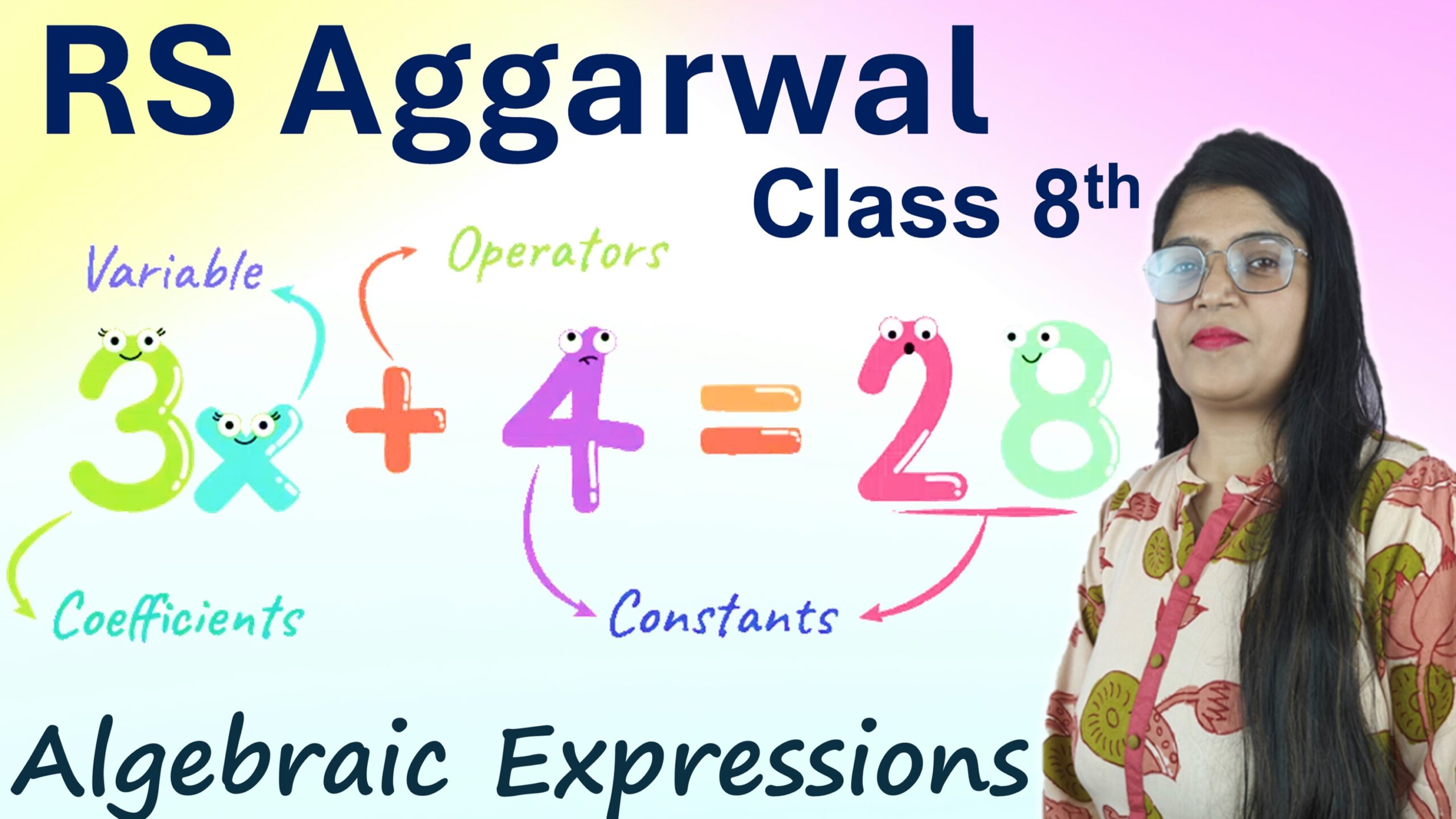Exercise: 2-B
Q1: Mark the following pairs of rational numbers on the separate number lines:
i. \(\frac{3}{4}\ and\ -\frac{1}{4}\)
----|----|----|----|----|----|----|----|----|----
-1 0 1
↑ ↑
-1/4 3/4
ii. \(\frac{2}{5}\ and\ \frac{-3}{5}\)
----|----|----|----|----|----|----|----|----|----|----|----
-1 0 1
↑ ↑
-3/5 2/5
iii. \(\frac{5}{6}\ and\ -\frac{2}{3}\)
---|---|---|---|---|---|---|---|---|---|---|---|---|---
-1 0 1
↑ ↑
-2/3 5/6
iv. \(\frac{2}{5}\ and\ -\frac{4}{5}\)
----|----|----|----|----|----|----|----|----|----|----|---
-1 0 1
↑ ↑
-4/5 2/5
v. \(\frac{1}{4}\ and\ -\frac{5}{4}\)
----|---|---|---|---|---|---|---|---|---|---|---|---|---
-2 -1 0 1
↑ ↑
-5/4 1/4
Q2: Compare:
i. \(\frac{3}{5}\) and \(\frac{5}{7}\)
LCM of 5 and 7 = 35
\[
\frac{3}{5} = \frac{21}{35}, \quad \frac{5}{7} = \frac{25}{35}
\]
\(\frac{3}{5} < \frac{5}{7}\)
ii. \(\frac{-7}{2}\) and \(\frac{5}{2}\)
Same denominator 2:
\[
-7 < 5
\]
\(\frac{-7}{2} < \frac{5}{2}\)
iii. \(-3\) and \(2\frac{3}{4}\)
\[
-3 < 2\frac{3}{4}
\]
\(-3 < 2\frac{3}{4}\)
iv. \(-1\frac{1}{2}\) and \(0\)
\[
-1.5 < 0
\]
\(-1\frac{1}{2} < 0\)
v. \(0\) and \(\frac{3}{4}\)
\[
0 < \frac{3}{4}
\]
\(0 < \frac{3}{4}\)
vi. \(3\) and \(-1\)
\[
3 > -1
\]
\(3 > -1\)
Q3: Compare:
i. \(-\frac{1}{4}\) and \(0\)
\[
-\frac{1}{4} < 0
\]
\(-\frac{1}{4} < 0\)
ii. \(\frac{1}{4}\) and \(0\)
\[
\frac{1}{4} > 0
\]
\(\frac{1}{4} > 0\)
iii. \(-\frac{3}{8}\) and \(\frac{2}{5}\)
LCM of 8 and 5 = 40
\[
-\frac{3}{8} = -\frac{15}{40}, \quad \frac{2}{5} = \frac{16}{40}
\]
\[
-15 < 16
\]
\(-\frac{3}{8} < \frac{2}{5}\)
iv. \(\frac{-5}{8}\) and \(\frac{7}{-12}\)
LCM of 8 and 12 = 24
\[
\frac{-5}{8} = \frac{-15}{24}, \quad \frac{7}{-12} = \frac{-14}{24}
\]
\[
-15 < -14
\]
\(\frac{-5}{8} < \frac{7}{-12}\)
v. \(\frac{5}{-9}\) and \(\frac{-5}{-9}\)
Simplify:
\[
\frac{5}{-9} = -\frac{5}{9}, \quad \frac{-5}{-9} = \frac{5}{9}
\]
\[
-\frac{5}{9} < \frac{5}{9}
\]
\(\frac{5}{-9} < \frac{-5}{-9}\)
vi. \(\frac{-7}{8}\) and \(\frac{5}{-6}\)
LCM of 8 and 6 = 24
\[
\frac{-7}{8} = \frac{-21}{24}, \quad \frac{5}{-6} = \frac{-20}{24}
\]
\[
-21 < -20
\]
\(\frac{-7}{8} < \frac{5}{-6}\)
vii. \(\frac{2}{7}\) and \(\frac{-3}{-8}\)
Simplify:
\[
\frac{-3}{-8} = \frac{3}{8}
\]
LCM of 7 and 8 = 56
\[
\frac{2}{7} = \frac{16}{56}, \quad \frac{3}{8} = \frac{21}{56}
\]
\[
16 < 21
\]
\(\frac{2}{7} < \frac{-3}{-8}\)
Q4: Arrange the given rational numbers in ascending order:
i. \(\frac{7}{10}, \frac{-11}{-30}, \frac{5}{-15}\)
First, simplify:
\[
\frac{-11}{-30} = \frac{11}{30}, \quad \frac{5}{-15} = -\frac{1}{3}
\]Convert to decimals:
\[
\frac{7}{10} = 0.7, \quad \frac{11}{30} \approx 0.366, \quad -\frac{1}{3} \approx -0.333
\]Ascending order:
\[
\frac{5}{-15}, \frac{-11}{30}, \frac{7}{10}
\]Answer: \(\frac{5}{-15}, \frac{-11}{30}, \frac{7}{10}\)
ii. \(\frac{4}{-9}, \frac{-5}{12}, \frac{2}{-3}\)
Simplify:
\[
\frac{4}{-9} = -\frac{4}{9}, \quad \frac{2}{-3} = -\frac{2}{3}
\]Convert to decimals:
\[
-\frac{4}{9} \approx -0.444, \quad -\frac{5}{12} \approx -0.416, \quad -\frac{2}{3} \approx -0.666
\]Ascending order:
\[
\frac{2}{-3}, \frac{4}{-9}, \frac{-5}{12}
\]Answer: \(\frac{2}{-3}, \frac{4}{-9}, \frac{-5}{12}\)
Q5: Arrange the given rational numbers in descending order:
i. \(\frac{5}{8}, \frac{13}{-16}, \frac{-7}{12}\)
Simplify:
\[
\frac{13}{-16} = -\frac{13}{16}
\]Convert to decimals:
\[
\frac{5}{8} = 0.625, \quad -\frac{13}{16} \approx -0.812, \quad -\frac{7}{12} \approx -0.583
\]Descending order:
\[
0.625, -0.583, -0.812
\]Answer: \(\frac{5}{8}, \frac{-7}{12}, \frac{13}{-16}\)
ii. \(\frac{3}{-10}, \frac{-13}{30}, \frac{8}{-20}\)
Simplify:
\[
\frac{3}{-10} = -\frac{3}{10}, \quad \frac{8}{-20} = -\frac{2}{5}
\]Convert to decimals:
\[
-\frac{3}{10} = -0.3, \quad -\frac{13}{30} \approx -0.433, \quad -\frac{2}{5} = -0.4
\]Descending order:
\[
-0.3, -0.4, -0.433
\]Answer: \(\frac{3}{-10}, \frac{8}{-20}, \frac{-13}{30}\)
Q6: Fill in the blanks:
i. \(\frac{5}{8}\) and \(\frac{3}{10}\) are on the same side of zero.
ii. \(-\frac{5}{8}\) and \(\frac{3}{10}\) are on opposite sides of zero.
iii. \(-\frac{5}{8}\) and \(-\frac{3}{10}\) are on the same side of zero.
iv. \(\frac{5}{8}\) and \(-\frac{3}{10}\) are on opposite sides of zero.
Q7: Insert three rational numbers between:
(a) Between \(-\frac{2}{3}\) and \(\frac{3}{4}\)
Step 1: Find LCM of denominators 3 and 4.
LCM of 3 and 4 = 12
Step 2: Convert both fractions to have denominator 12:
\[
-\frac{2}{3} = \frac{-8}{12},\quad \frac{3}{4} = \frac{9}{12}
\]Step 3: Now between \(-8\) and \(9\) (numerators), we can pick numbers like \(-5, -2, 2\) etc.
Thus, three rational numbers between \(-\frac{2}{3}\) and \(\frac{3}{4}\) are:
\[
\frac{-5}{12},\quad \frac{-2}{12},\quad \frac{2}{12}
\]
or simplified:
\[
\frac{-5}{12},\quad \frac{-1}{6},\quad \frac{1}{6}
\]
(b) Between \(\frac{5}{7}\) and \(\frac{7}{9}\)
Step 1: Find LCM of 7 and 9.
LCM of 7 and 9 = 63
Step 2: Convert both fractions:
\[
\frac{5}{7} = \frac{45}{63},\quad \frac{7}{9} = \frac{49}{63}
\]Step 3: Between 45 and 49, we have 46, 47, 48.
Thus, three rational numbers are:
\[
\frac{46}{63},\quad \frac{47}{63},\quad \frac{48}{63}
\]
(c) Between \(-\frac{5}{8}\) and \(-\frac{1}{6}\)
Step 1: Find LCM of 8 and 6.
LCM of 8 and 6 = 24
Step 2: Convert both fractions:
\[
-\frac{5}{8} = \frac{-15}{24},\quad -\frac{1}{6} = \frac{-4}{24}
\]Step 3: Between -15 and -4, we have -14, -12, -10, etc.
Thus, three rational numbers are:
\[
\frac{-14}{24} = \frac{-7}{12},\quad \frac{-12}{24} = \frac{-1}{2},\quad \frac{-10}{24} = \frac{-5}{12}
\]
Q8: Insert four rational numbers between:
(a) Between \(-\frac{3}{8}\) and \(-\frac{5}{6}\)
Step 1: Find LCM of 8 and 6.
LCM = 24
Step 2: Convert fractions:
\[
-\frac{3}{8} = \frac{-9}{24},\quad -\frac{5}{6} = \frac{-20}{24}
\]Step 3: Numbers between -20 and -9 are -19, -18, -17, -16, etc.
Thus, four rational numbers are:
\[
\frac{-19}{24},\quad \frac{-18}{24}=\frac{-3}{4},\quad \frac{-17}{24},\quad \frac{-16}{24}=\frac{-2}{3}
\]
(b) Between \(-\frac{4}{5}\) and \(\frac{2}{3}\)
Step 1: LCM of 5 and 3 = 15
Step 2: Convert fractions:
\[
-\frac{4}{5} = \frac{-12}{15},\quad \frac{2}{3} = \frac{10}{15}
\]Step 3: Numbers between -12 and 10 are -10, -8, -6, -4, etc.
Thus, four rational numbers are:
\[
\frac{-10}{15}=\frac{-2}{3},\quad \frac{-8}{15},\quad \frac{-6}{15}=\frac{-2}{5},\quad \frac{-4}{15}
\]
(c) Between \(-3\) and \(6\)
Step 1: Simple integers and fractions between -3 and 6:
Examples of four rational numbers are:
\[
-2,\quad 0,\quad 2,\quad 5
\]
(d) Between \(0\) and \(6\)
Simple rational numbers between 0 and 6:
Examples of four rational numbers are:
\[
1,\quad 2,\quad 3,\quad 4
\]






